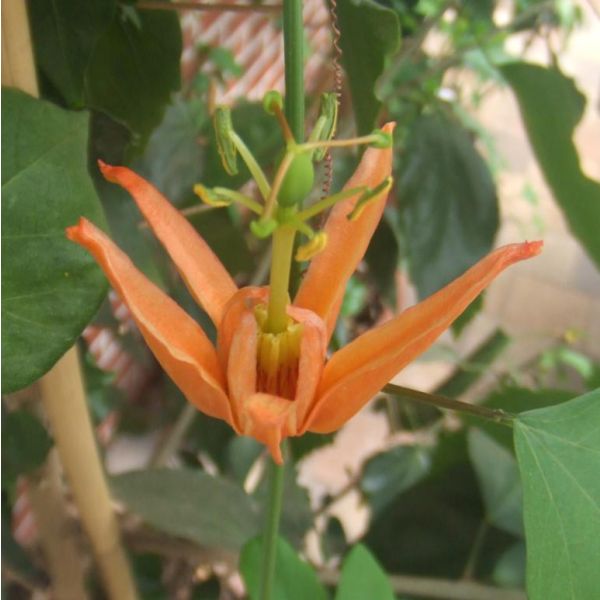Passiflora Aurantia Seeds (Passion Fruits, Passion Flowers)
Passiflora Aurantia Seeds (Passion Fruits, Passion Flowers)
The red or salmon coloured flowers are seen mainly in Winter and Spring but some flowers may also occur at other times of the year.

Delivery
All orders shipped with UPS Express.
Always free shipping for orders over US $250.
All orders are shipped with a UPS tracking number.
Returns
Items returned within 14 days of their original shipment date in same as new condition will be eligible for a full refund or store credit.
Refunds will be charged back to the original form of payment used for purchase.
Customer is responsible for shipping charges when making returns and shipping/handling fees of original purchase is non-refundable.
All sale items are final purchases.
Help
Give us a shout if you have any other questions and/or concerns.
Email: contact@domain.com
Phone: +1 (23) 456 789
Availability: Out of stock
SKU
Passiflora Aurantia
Passiflora aurantia is one of the few Passiflora native to Australia. It also occurs in New Guinea and on some Pacific islands. It climbs by means of clinging tendrils and can be kept as an container plant. The long tendrils need lots of support for climbing. Passiflora aurantia has been known to attach itself to textured brick. It may be grown as a houseplant in a sunny South-facing window.
The red or salmon coloured flowers are seen mainly in Winter and Spring but some flowers may also occur at other times of the year. From Latin, aurantius means, orange coloured, referring to the flower. The flowers are 4-8 cm in diameter and are followed by ovoid, green fruits, about 5 cm in diameter, containing greyish pulp and numerous black seeds. The pulp is edible but not especially palatable. Folliage is trilobed, dark green and up to 7 cm long.
Pruning is a must to keep the vine healthy. Prune off less vigorous growth and occasionally prune back vigorous growth to promote flowering. When established, and without care, the passion fruit can easily overtake other garden plants, shading them from sun.
Hardiness zone 10, (1øC/35øF) in Winter. Although Passiflora aurantia occurs in sub-tropical to tropical areas it has proven to be a reliable garden plant in most temperate areas if protected from frost. This one grows in sandy loam or on the chalk cliffs at the edge of the rain forest where nutrients are low, so do not over feed with too much nitrogen or it will never flower for you. It prefers moist, fairly rich soils, reasonable drainage and can be grown in full sun to semi-shade.
You may need to water your plants on a daily basis during the hottest Summer months. During the Winter the roots should be kept moist, but as growth will be much slower you will probably only need to water once a week, depending on growing temperature. It will do best in a loam based mix with a little peat moss. Fertilize at least once every two weeks in the growing season.
If their pot is too large or if they have an unrestricted root run then the whole plant will simply get bigger and bigger but it will refuse to flower and therefore produce the fruits. By limiting the pot size you are limiting the ability to grow and this is seen as a threat, so the natural mechanism is to produce seed for the next generation. A suitably sized pot for an adult plant would generally be of 12 inches in diameter.
| Common name | Passion Flowers |
|---|---|
| Species | Passiflora aurantia |
| Germination | Soak seed in warm water for 24 hours before sowing, in a good seed compost at 1/4" deep. For Passiflora seeds, instead of using water you can use a high pulp fruit juice such as passion fruit juice or orange juice. The acid in these juices will soften the shell and speed up germination. Keep damp soil, not soaking wet. Keep pot in warm situation 20øC/68øF, 24øC/75øF. Cover the top of the pot with clear plastic so the humidity will remain high. When you see some tiny plants starting to sprout, slowly open the top of the pot, a little each day, so that the new seedlings don't go into shock from the humidity being lowered too quickly. Germination of Passiflora can occur in weeks or take several months. If you want to speed up germination, you can use the bottom heat technique, but it isn't a must. |
| Scarification / Stratification | If your home is on the low side of 70§F, your seeds will benefit from bottom heat. Give warmth from underneath to stimulate early growth, and to help seeds to germinate. The ideal situation is to maintain the soil temperature at 70§F. For this, you use an electric soil warming cable kit, or a heating mat that goes under your flats; or any other source of heat. With the proper temperature, you will cut by 2 or 3 the germination time. |
| Price View | Price Range |

